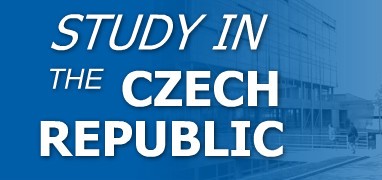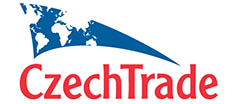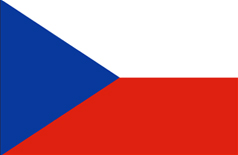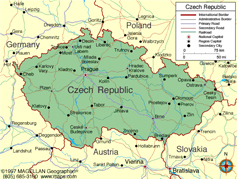About Czech Republic
Geography
The Czech Republic’s central European landscape is dominated by the Bohemian Massif, which rises to heights of 3,000 ft (900 m) above sea level. This ring of mountains encircles a large elevated basin, the Bohemian Plateau. The principal rivers are the Elbe and the Vltava.
Government
Parliamentary democracy.
History
Probably about the 5th century A.D. , Slavic tribes from the Vistula basin settled in the region of Bohemia, Moravia, and Silesia. The Czechs founded the kingdom of Bohemia and the Premyslide dynasty, which ruled Bohemia and Moravia from the 10th to the 16th century. One of the Bohemian kings, Charles IV, Holy Roman Emperor, made Prague an imperial capital and a center of Latin scholarship. The Hussite movement founded by Jan Hus (1369?–1415) linked the Slavs to the Reformation and revived Czech nationalism, previously under German domination. A Hapsburg, Ferdinand I, ascended the throne in 1526. The Czechs rebelled in 1618, precipitating the Thirty Years’ War (1618–1648). Defeated in 1620, they were ruled for the next 300 years as part of the Austrian empire. Full independence from the Hapsburgs was not achieved until the end of World War I, following the collapse of the Austrian-Hungarian Empire.
A union of the Czech lands and Slovakia was proclaimed in Prague on Nov. 14, 1918, and the Czech nation became one of the two component parts of the newly formed Czechoslovakian state. In March 1939, German troops occupied Czechoslovakia, and Czech Bohemia and Moravia became German protectorates for the duration of World War II. The former government returned in April 1945 when the war ended and the country’s pre-1938 boundaries were restored. When elections were held in 1946, Communists became the dominant political party and gained control of the Czechoslovakian government in 1948. Thereafter, the former democracy was turned into a Soviet-style state.
Facts & Figures
President : Miloš Zeman (2013)
Prime Minister : Andrej Babiš (2017)
Land area: 29,836 sq mi (77,276 sq km); total area: 30,450 sq mi (78,866 sq km)
Population (2019 est.) : 10,629,995 (growth rate: –-0.05%); birth rate: 8.62/1000; infant mortality rate: 3.7/1000; life expectancy: 77.38; density per sq km: 132
Capital and largest city (2003 est.) :
Prague, 1,276,
Other large cities : Brno, 376,400; Ostrava, 317,700; Plzen, 164,900; Olomouc, 102,900
Monetary unit: Koruna
Nearly 42 years of Communist rule ended with the nearly bloodless “velvet revolution” in 1989. Václav Havel, a leading playwright and dissident, was elected president of Czechoslovakia in 1989. Havel, imprisoned twice by the Communist regime and his plays banned, became an international symbol for human rights, democracy, and peaceful dissent. The return of democratic political reform saw a strong Slovak nationalist movement emerge by the end of 1991, which sought independence for Slovakia. When the general elections of June 1992 failed to resolve the continuing coexistence of the two republics within the federation, Czech and Slovak political leaders agreed to separate their states into two fully independent nations. On Jan. 1, 1993, the Czechoslovakian federation was dissolved and two separate independent countries were established—the Czech Republic and Slovakia. The Czech Republic joined NATO in March 1999.
In Aug. 2002, severe flooding caused 70,000 people in Prague and 200,000 nationwide to be evacuated.
President Václav Havel left office in Feb. 2003, after 13 years as president. Over the years, Havel lost some of his immense popularity with the Czechs, who became disenchanted with his failings as a political leader. But internationally Havel has remained a towering figure of moral authority and courage. In March, Václav Klaus became the Czech Republic’s second president. A conservative economist, he and Havel often clashed. In May 2004, the Czech Republic joined the EU. After an inconclusive election in June 2006, the political deadlock was broken in August, with rightist Mirek Topolánek appointed prime minister. His government resigned in October, after losing a no-confidence vote. He formed another government in January 2007. A year later, Topolánek’s government narrowly survived another no-confidence vote.
On July 8, 2008, after lengthy negotiations and much debate, the Czech Republic agreed to allow the United States to deploy on its land an antiballistic missile shield. Russia strongly objected to the accord, which views the system as a threat. U.S. officials said the shield is meant to deter an attack from Iran. Czech lawmakers must approve the deal.
While the Czech Republic held a six-month rotating term as President of the EU, the government collapsed and Prime Minister Mirek Topolanek resigned after his center-right government lost a parliamentary vote of confidence in March 2009. In May, Jan Fischer, an economist, became the head of a caretaker government, which he ran for more than a year, until elections in May 2010. The left-wing Social Democrats (CSSD) fared best in the general election, but did not take a majority and thus could not form a government. The Civic Democratic Party (ODS), which placed behind CSSD, entered into a coalition with the right-wing TOP 09 and centrist Public Affairs. In June, ODS leader Petr Necas became prime minister. Facing a growing deficit, Necas proposed a 10% pay reduction for public workers and strict spending cuts. The move sparked massive protests.
Former president Václav Havel died in Dec. 2011.
On Jan. 11–12, 2013, the Czech Republic held its first ever direct popular vote for president. Of the nine candidates, no one secured a majority of the vote. Former prime minister Milos Zeman received 24.2% of the vote, with current Foreign Minister Karel Schwarzenberg a close second with 23.4%. Voter turnout was over 61%.
A runoff between Zeman, from the Party of Citizen’s Rights, and Schwarzenberg, a member of the Traditional Responsibility Party, ended with Zeman victorious with 54.8% of the vote. President Zeman was sworn in on March 8, 2013.
In June 2013, Petr Necas resigned as the Czech Republic’s prime minister following a scandal involving his chief of staff Jana Nagyova, who was charged with bribery and abuse of office. President Zeman appointed former finance minister Jiri Rusnok as the new prime minister.
After new prime minister Jiri Rusnok lost a confidence vote in parliament 93 to 100 on August 7, 2013, the country faced the dissolution of lower parliament and early elections in October. After months without a fully functioning government, Czech voters went to the polls on October 26, 2013, but results were less than definitive, leaving the country divided and without clear leadership. Bohuslav Sobotka and his party, the Czech Social Democrats (CSSD), came away with 20% of the vote, while millionaire media mogul Andrej Babis and his brand-new protest movement ANO came away with less than 19%.












